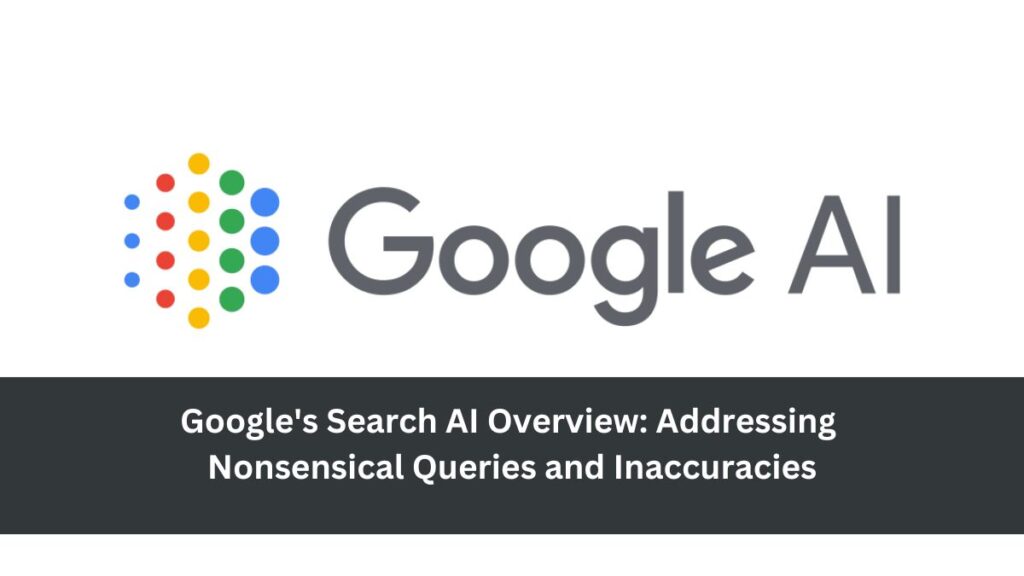In the ever-evolving landscape of search engines, Google has taken a bold step forward by introducing AI Overviews – a feature that leverages artificial intelligence to summarize information from websites and provide direct answers to search queries. As with any groundbreaking technology, however, there have been growing pains and challenges to overcome.
Peculiar Responses and Viral Backlash
When Google rolled out AI Overviews to users across the United States last week, the internet was abuzz with examples of the AI delivering bizarre and inaccurate responses. From suggesting that people should eat rocks for health benefits to recommending the use of glue to make cheese stick better to pizza, these peculiar snippets quickly went viral, drawing widespread criticism and raising concerns about the reliability of the new feature.
Amidst the backlash, Liz Reid, the head of Google Search, took to the company’s blog to address the issues and shed light on the underlying causes. Her candid post acknowledged the flaws while offering insights into the complexities of developing such an advanced system.
The “Data Void” Conundrum
One of the primary challenges highlighted by Reid was the existence of “data voids” or “information gaps” – topics with limited high-quality online content. In the case of the infamous “how many rocks should I eat” query, Reid explained that hardly anyone had ever searched for that before, leaving the AI to rely on a joke article as one of the few available sources.
“Prior to these screenshots going viral, practically no one asked Google that question,” Reid wrote. “There isn’t much web content that seriously contemplates that question, either. This is what is often called a ‘data void’ or ‘information gap,’ where there’s a limited amount of high quality content about a topic.”
The Double-Edged Sword of User-Generated Content
Another issue that contributed to the AI’s missteps was its reliance on user-generated content from forums and social media platforms. While these sources can sometimes provide valuable firsthand information, they can also contain dubious advice or misinformation, which the AI inadvertently picked up on.
Reid cited the example of the pizza cheese glue response, which stemmed from a discussion forum post – a cautionary tale about the potential pitfalls of incorporating crowdsourced data into AI training models.
Defending Google’s Approach and Addressing Criticisms
Amidst the controversy, Reid staunchly defended Google’s approach, emphasizing that the AI Overviews are designed differently than chatbots and are integrated with the company’s core web ranking systems to surface relevant, high-quality results. She argued that, as a result, the AI typically does not “hallucinate” information like other large language models and boasts an accuracy rate on par with Google’s featured snippets.
However, Reid acknowledged that “some odd, inaccurate or unhelpful AI Overviews certainly did show up,” highlighting areas for improvement and the need for ongoing refinement.
Implementing Changes and Strengthening Safeguards
In response to the issues, Google has implemented over a dozen changes to the AI Overview system, aimed at addressing the root causes of the inaccuracies and enhancing the overall user experience.
Among the key improvements are:
- Recognizing Nonsensical Queries: The AI has been enhanced to better identify silly or nonsensical questions that it should not attempt to answer directly.
- Reduced Reliance on User-Generated Content: To mitigate the risks posed by potentially unreliable sources, Google has decreased the AI’s reliance on forums and social media posts.
- Stricter Rules for Sensitive Topics: While Google already had stringent rules in place for handling sensitive topics like health and news, it has now implemented even more stringent limits, especially for health-related searches.
- Ongoing Monitoring and Rapid Response: Google has committed to closely monitoring the AI Overviews and quickly addressing any emerging issues or inaccuracies.
Looking Ahead: A Continuous Learning Process
As the dust settles on the initial backlash, it is clear that the introduction of AI-powered search summaries is a complex endeavor that requires ongoing refinement and adaptation. Reid’s candid acknowledgment of the challenges and Google’s proactive approach to addressing them demonstrate a commitment to continuous improvement and a willingness to learn from missteps.
In her closing remarks, Reid expressed gratitude for the ongoing feedback from users, recognizing that their input is invaluable in shaping the future of this revolutionary technology. “We’ll keep improving when and how we show AI Overviews and strengthening our protections, including for edge cases,” she wrote. “We’re very grateful for the ongoing feedback.”
As we venture further into the era of AI-powered search, it is essential to embrace a spirit of open communication, transparency, and a willingness to learn from mistakes. Only through this collaborative approach can we harness the full potential of artificial intelligence while minimizing the risks and ensuring that the information presented to users is accurate, reliable, and trustworthy.

